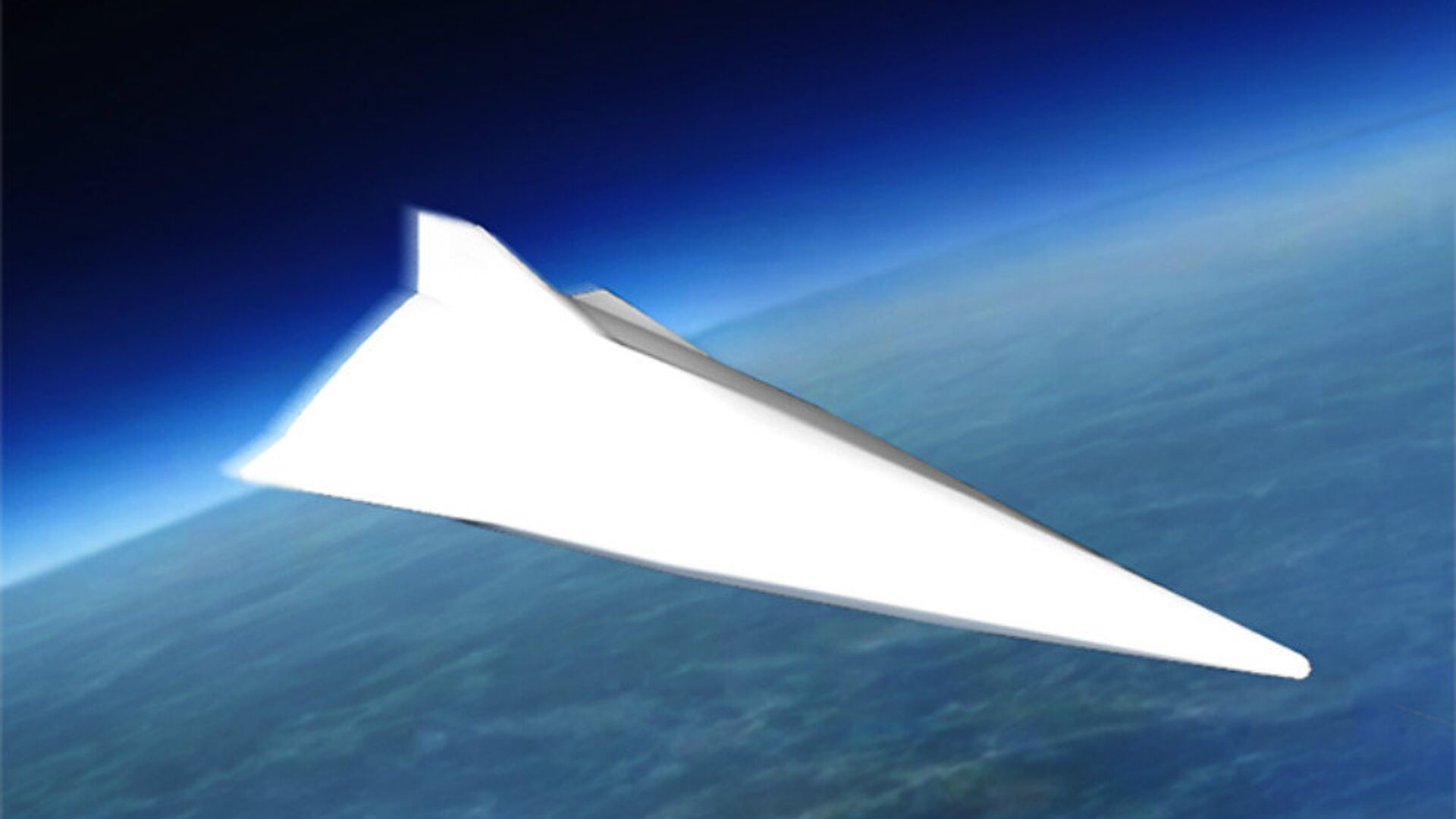https://sputnikglobe.com/20211130/us-space-force-raises-alarm-over-chinas-orbital-hypersonic-weapons-us-cant-combat-1091148959.html
US Space Force Raises Alarm Over China's 'Orbital Hypersonic Weapons America Can't Combat'
US Space Force Raises Alarm Over China's 'Orbital Hypersonic Weapons America Can't Combat'
Sputnik International
The Pentagon suggests that China tested a fractional orbital bombardment system (FOBS) earlier this year. According to US military observers, China's alleged... 30.11.2021, Sputnik International
2021-11-30T16:32+0000
2021-11-30T16:32+0000
2021-11-30T16:33+0000
pentagon
newsfeed
world
us
asia
china
hypersonic
glider
weapon
gliding bomb
https://cdn1.img.sputnikglobe.com/img/106188/72/1061887212_0:182:1001:745_1920x0_80_0_0_465f9e4e714b15f4f8d89ef5c3165013.jpg
China's new hypersonic weapon system is orbital in nature and could be able to stay in space for a protracted period of time, claimed US Space Force Lieutenant General Chance Saltzman while delivering remarks at The Mitchell Institute's Spacepower Forum on 29 November.Saltzman referred to Beijing's alleged weapon test earlier this year which was first reported by the Financial Times in October 2021. Citing five individuals “with knowledge of the test,” the FT broke on 16 October that the Chinese military had launched a Long March rocket carrying a hypersonic glide vehicle.The nuclear-capable hypersonic weapon circled Earth at low orbit before descending toward its target, according to the newspaper. However, China resolutely refuted the FT's "hypersonic missile test report": "It's understood that this was a routine test of a space vehicle to verify technology of spacecraft's reusability," Chinese Foreign Ministry spokesperson Zhao Lijian said.Still, Saltzman claimed that the Chinese had tested a new weapon appearing to be a fractional orbital bombardment system (FOBS) that deployed a hypersonic glide vehicle.A FOBS is a warhead delivery system that uses a low earth orbit towards its target destination. A FOBS' major advantage is that, unlike a ballistic missile, it has an unpredictable trajectory which makes it especially hard to track, Saltzman pointed out.Moreover, Lieutenant General Saltzman remarked that the difficulty in detecting and tracking the flight of a FOBS "could also make it hard to quickly attribute it to a particular country.""This could, in turn, reduce the amount of time a defender has to spot and then categorize an incoming nuclear strike and then decide how to respond," The Drive notes.The system was originally developed by the USSR between 1960s and 1980s and was reportedly designed to "launch thermonuclear warheads on a south-to-north trajectory to take out northern-facing North American Aerospace Defense Command’s (NORAD) ballistic missile early-warning radars," the Hill noted. However, the Chinese weapon appears to be slightly different since it de-orbited a highly manoeuvrable hypersonic glide vehicle (HGV), according to the lieutenant general.The description provided by Saltzman is broadly in line with the remarks by now-retired Air Force General John Hyten, former vice-chairman of the Joint Chiefs of Staff, according to The Drive. Speaking to CBS News earlier this month Hyten said that China's new hypersonic weapon "went around the world, dropped off a hypersonic glide vehicle that glided all the way back to China, that impacted a target in China."Meanwhile, in late October 2021, The Hill raised the alarm over China's alleged FOBS weapon. According to the media outlet, Beijing's new orbital hypersonic glide vehicle weapons system violates the Outer Space Treaty and triggers deep concerns in Washington and among its NATO allies.According to The Drive, "while many key details about this new Chinese weapon system remain murky," the US government's assessment indicates that Washington sees China's alleged new weapon system "a key contributing factor in its potential to upset the strategic balance of power between the two countries."
https://sputnikglobe.com/20211017/stop-poking-the-dragon-chinas-hypersonic-missiles-can-reach-us--uk-in-blink-of-eye-netizens-say-1089986994.html
https://sputnikglobe.com/20211122/chinas-hypersonic-missile-test-leaves-pentagon-officials-baffled-by-beijings-advance-1090921834.html
china
Sputnik International
feedback@sputniknews.com
+74956456601
MIA „Rossiya Segodnya“
2021
News
en_EN
Sputnik International
feedback@sputniknews.com
+74956456601
MIA „Rossiya Segodnya“
Sputnik International
feedback@sputniknews.com
+74956456601
MIA „Rossiya Segodnya“
pentagon, newsfeed, us, china, hypersonic, glider, weapon, gliding bomb, us space force (ussf)
pentagon, newsfeed, us, china, hypersonic, glider, weapon, gliding bomb, us space force (ussf)
US Space Force Raises Alarm Over China's 'Orbital Hypersonic Weapons America Can't Combat'
16:32 GMT 30.11.2021 (Updated: 16:33 GMT 30.11.2021) The Pentagon suggests that China tested a fractional orbital bombardment system (FOBS) earlier this year. According to US military observers, China's alleged new orbital hypersonic glide vehicle weapon poses a huge challenge to the Pentagon since the US does not have active countermeasures to these arms.
China's new hypersonic weapon system is orbital in nature and could be able to stay in space for a protracted period of time, claimed US Space Force Lieutenant General Chance Saltzman while
delivering remarks at The Mitchell Institute's Spacepower Forum on 29 November.
Saltzman referred to Beijing's alleged weapon test earlier this year which was
first reported by the Financial Times in October 2021. Citing five individuals “with knowledge of the test,” the FT broke on 16 October that the Chinese military had launched a Long March rocket carrying a hypersonic glide vehicle.

17 October 2021, 14:33 GMT
The nuclear-capable hypersonic weapon circled Earth at low orbit before descending toward its target, according to the newspaper. However, China resolutely refuted the FT's "hypersonic missile test report": "It's understood that this was a routine test of a space vehicle to verify technology of spacecraft's reusability," Chinese Foreign Ministry spokesperson Zhao Lijian said.
Still, Saltzman claimed that the Chinese had tested a new weapon appearing to be a fractional orbital bombardment system (FOBS) that
deployed a hypersonic glide vehicle.
A FOBS is a warhead delivery system that uses a low earth orbit towards its target destination. A FOBS' major advantage is that, unlike a ballistic missile, it has an unpredictable trajectory which makes it especially hard to track, Saltzman pointed out.
"A fractional orbit means it can stay on orbit as long as the user determines and then it de-orbits it as a part of the flight path," the Space Force official emphasised as quoted by The Drive. This presents serious challenges to a rival's early warning networks as well as their ability to anticipate where and when a strike might occur, the media outlet explains.
Moreover, Lieutenant General Saltzman remarked that the difficulty in detecting and tracking the flight of a FOBS "could also make it hard to quickly attribute it to a particular country."
"This could, in turn, reduce the amount of time a defender has to spot and then categorize an incoming nuclear strike and then decide how to respond," The Drive notes.
The system was originally developed by the USSR between 1960s and 1980s and was
reportedly designed to "launch thermonuclear warheads on a south-to-north trajectory to take out northern-facing North American Aerospace Defense Command’s (NORAD) ballistic missile early-warning radars," the Hill
noted.
However, the Chinese weapon appears to be slightly different since it de-orbited a highly manoeuvrable hypersonic glide vehicle (HGV), according to the lieutenant general.
The description provided by Saltzman is broadly in line with the remarks by now-retired Air Force General John Hyten, former vice-chairman of the Joint Chiefs of Staff, according to The Drive.
Speaking to CBS News earlier this month Hyten said that China's new hypersonic weapon "went around the world, dropped off a hypersonic glide vehicle that glided all the way back to China, that impacted a target in China."

22 November 2021, 11:13 GMT
Meanwhile, in late October 2021, The Hill
raised the alarm over China's alleged FOBS weapon. According to the media outlet, Beijing's new orbital hypersonic glide vehicle weapons system violates the Outer Space Treaty and triggers deep concerns in Washington and among its NATO allies.
"Their concern is well placed," the media outlet highlighted. "Defenses and tracking sensors against that sort of threat do not presently exist… Today, the United States has no dedicated, active countermeasure to the Chinese FOBS. Cold War systems were retired years ago."
According to The Drive, "while many key details about this new Chinese weapon system remain murky," the US government's assessment indicates that Washington sees China's alleged new weapon system "a key contributing factor in its potential to upset the strategic balance of power between the two countries."




